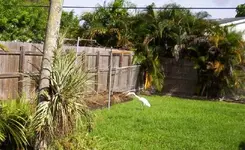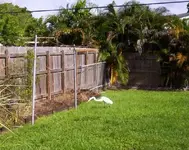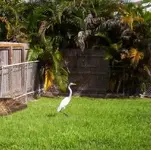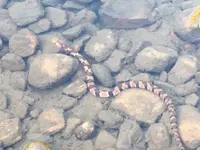DeepseekerADS
Gold Member
- Joined
- Mar 3, 2013
- Messages
- 14,880
- Reaction score
- 21,745
- Golden Thread
- 0
- Location
- SW, VA - Bull Mountain
- Detector(s) used
- CTX, Excal II, EQ800, Fisher 1260X, Tesoro Royal Sabre, Tejon, Garrett ADSIII, Carrot, Stealth 920iX, Keene A52
- Primary Interest:
- Other
- #1
Thread Owner
This is another tip courtesy of Jason Richards, The Family Survival Club:
Going camping or hiking is a great way to spend a weekend. You get to reconnect with Mother Nature, while escaping the stress and mayhem of the city. And while this activity is extremely pleasant, it has some risks.
Among them are animal attacks and while you can spot a bear or a moose from a distance, other animals may slip unnoticed and cause you life-threatening injury with nothing more than a bite.
Snakes have a really nasty reputation for sticking their heads (fangs and all) into other people business. In the U.S. 9-15 people die every year from snake bites, and while the numbers aren't that high, I'm sure you don't want to become part of that statistic.
That's why is important to know how to recognize snakes. If you do get bitten, you will be able to give the necessary information at the hospital so that they can administer the right anti-venom. Today I will show you X of the most common poisonous snakes in the US and tell you all you need to know about them.
1. Coral Snake
Looks: You can spot the quite easy because of their alternating, red, yellow, and black bands in this order. Remember it well because there are other snakes that have the same colors, but different patterns. Those snakes aren't poisonous, but take my advice: stay clear of any snake, just to be on the safe side.
Coral snakes are shorter than other venomous snakes. They average about 40 inches and have smaller mouths and fangs.
Habitat: They are usually found in dry areas with lots of shrub in southern and eastern U.S. Most of the time they stay hidden underground or under leaf litter. You'll see them more active after it rains or in the breeding season. Note that there's an aquatic species, so be careful where you go to cool off in the summer.
Temper: Unless threatened, they won't bite or act aggressive. But if they do decide to bite, they hold on and won't let go. This is due to the fact that their venom takes longer to deliver.
2. The Diamondback Rattlesnake
Looks: Different species of rattlesnakes have different colorings, but they all have 2 things in common: the diamond pattern and the rattle. Diamondbacks grow to about 3.5-5.5 ft. long. The ones found on the eastern part of the US grow even bigger, reaching 7 ft.
Habitat: You'll find them on the southern border of the United States from Florida to Baja California. You'll often find them basking in the sun's rays on a rock, so admire them from a far and move on without disturbing them. The eastern species have been known to climb and are excellent swimmers, so be careful.
Temper: They'll often stand their ground and can strike repeatedly from a distance up to 2/3 of their body size. The attacks are lightning fast so stay as far away as possible from them. Diamondbacks have one of the deadliest venoms and people have died within hours of being bitten.
3. The Mojave Rattlesnake
Looks: It's similar to the diamondback, only the overall coloration is green-greyish and it grows to 3.4-5 ft. long.
Habitat: As you might've guessed from its name, you can run across it primarily in the Mojave Desert. That's why be extra careful when you go to the Grand Canyon. They are common in wide expanses of desert and can often be found near scrub brush. They hibernate during the winter.
Temper: They are quite aggressive, especially towards humans.
4. Cottonmouth Snakes
Looks: They have a brown, gray, tan, yellowish olive or blackish coloring segmented by dark crossbands. While normally they are about 2 ft. long, some have been known to grow to nearly 6 ft. Their name comes from the white interior of their mouths, which can be seen if the snake feels threatened.
Habitat: This is an aquatic snake found in the south and southeast part of the United States. Everything from make creeks, streams, marshes, and lakes are home to the cottonmouth. They're active both in the day time and night time and if it's too hot, you might run into them in the shade.
Temper: You know the saying: all bark and no bite? This applies to the cottonmouth. They often engage in a showy threat display without attacking by shaking their tail and letting a musky secretion rip from their anal glands. This doesn't mean that it won't bite if you push it into a corner. As with any poisonous snake, leave it alone.
5. Copperhead Snakes
Looks: Copperhead snakes are identified by their coppery colored head and neck. Adults reach lengths of 2 to 4 feet.
Habitat: They can be found near water in the forests and woodlands of eastern US.
Temper: If they feel directly threatened (you try to touch or pick them up) they will bite. Most venomous snakes flee when people are around, but the copperhead does the exact opposite. It freezes in place, which leads to humans stepping on it. Their bite isn't lethal if treated properly, but it is extremely painful.
There are of course many other venomous snakes all around the world, but knowing where to look and how to spot the ones that are around our country, may safe your or a loved one's life one day.
Going camping or hiking is a great way to spend a weekend. You get to reconnect with Mother Nature, while escaping the stress and mayhem of the city. And while this activity is extremely pleasant, it has some risks.
Among them are animal attacks and while you can spot a bear or a moose from a distance, other animals may slip unnoticed and cause you life-threatening injury with nothing more than a bite.
Snakes have a really nasty reputation for sticking their heads (fangs and all) into other people business. In the U.S. 9-15 people die every year from snake bites, and while the numbers aren't that high, I'm sure you don't want to become part of that statistic.
That's why is important to know how to recognize snakes. If you do get bitten, you will be able to give the necessary information at the hospital so that they can administer the right anti-venom. Today I will show you X of the most common poisonous snakes in the US and tell you all you need to know about them.
1. Coral Snake
Looks: You can spot the quite easy because of their alternating, red, yellow, and black bands in this order. Remember it well because there are other snakes that have the same colors, but different patterns. Those snakes aren't poisonous, but take my advice: stay clear of any snake, just to be on the safe side.
Coral snakes are shorter than other venomous snakes. They average about 40 inches and have smaller mouths and fangs.
Habitat: They are usually found in dry areas with lots of shrub in southern and eastern U.S. Most of the time they stay hidden underground or under leaf litter. You'll see them more active after it rains or in the breeding season. Note that there's an aquatic species, so be careful where you go to cool off in the summer.
Temper: Unless threatened, they won't bite or act aggressive. But if they do decide to bite, they hold on and won't let go. This is due to the fact that their venom takes longer to deliver.
2. The Diamondback Rattlesnake
Looks: Different species of rattlesnakes have different colorings, but they all have 2 things in common: the diamond pattern and the rattle. Diamondbacks grow to about 3.5-5.5 ft. long. The ones found on the eastern part of the US grow even bigger, reaching 7 ft.
Habitat: You'll find them on the southern border of the United States from Florida to Baja California. You'll often find them basking in the sun's rays on a rock, so admire them from a far and move on without disturbing them. The eastern species have been known to climb and are excellent swimmers, so be careful.
Temper: They'll often stand their ground and can strike repeatedly from a distance up to 2/3 of their body size. The attacks are lightning fast so stay as far away as possible from them. Diamondbacks have one of the deadliest venoms and people have died within hours of being bitten.
3. The Mojave Rattlesnake
Looks: It's similar to the diamondback, only the overall coloration is green-greyish and it grows to 3.4-5 ft. long.
Habitat: As you might've guessed from its name, you can run across it primarily in the Mojave Desert. That's why be extra careful when you go to the Grand Canyon. They are common in wide expanses of desert and can often be found near scrub brush. They hibernate during the winter.
Temper: They are quite aggressive, especially towards humans.
4. Cottonmouth Snakes
Looks: They have a brown, gray, tan, yellowish olive or blackish coloring segmented by dark crossbands. While normally they are about 2 ft. long, some have been known to grow to nearly 6 ft. Their name comes from the white interior of their mouths, which can be seen if the snake feels threatened.
Habitat: This is an aquatic snake found in the south and southeast part of the United States. Everything from make creeks, streams, marshes, and lakes are home to the cottonmouth. They're active both in the day time and night time and if it's too hot, you might run into them in the shade.
Temper: You know the saying: all bark and no bite? This applies to the cottonmouth. They often engage in a showy threat display without attacking by shaking their tail and letting a musky secretion rip from their anal glands. This doesn't mean that it won't bite if you push it into a corner. As with any poisonous snake, leave it alone.
5. Copperhead Snakes
Looks: Copperhead snakes are identified by their coppery colored head and neck. Adults reach lengths of 2 to 4 feet.
Habitat: They can be found near water in the forests and woodlands of eastern US.
Temper: If they feel directly threatened (you try to touch or pick them up) they will bite. Most venomous snakes flee when people are around, but the copperhead does the exact opposite. It freezes in place, which leads to humans stepping on it. Their bite isn't lethal if treated properly, but it is extremely painful.
There are of course many other venomous snakes all around the world, but knowing where to look and how to spot the ones that are around our country, may safe your or a loved one's life one day.





 , till the freeze froze all the fish, now they on snake diet.
, till the freeze froze all the fish, now they on snake diet. 





